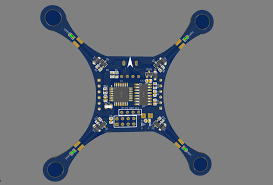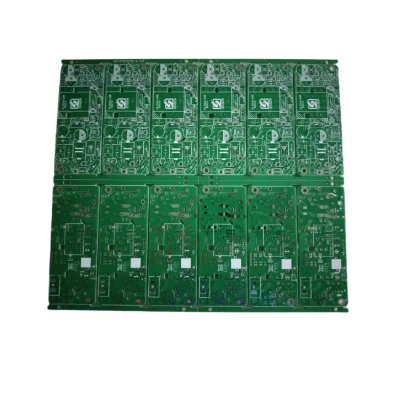In next-generation intelligent aerial surveillance platforms, UAV manufacturers face increasing demands for real-time data fusion, long-range imaging, high-throughput RF links, and multi-sensor synchronization. These requirements place enormous pressure on the UAV PCB architecture, especially in compact airframes where thermal, mechanical, and electromagnetic constraints are all tightly coupled. This is why high-density PCB design (HDI PCB), RF PCB optimization, and high-frequency PCB materials have become core enablers of modern UAV surveillance electronics.

High-Density UAV PCB as the Core of Multi-Sensor Processing
A high-density UAV PCB integrates multiple subsystems—IMU, GPS, AI processors, radar modules, camera interfaces, RF transceivers—into a compact embedded system. This high level of electronic integration significantly improves multi-sensor processing efficiency by reducing interconnect lengths, lowering insertion loss, and enabling higher signal integrity.
Key advantages of high-density PCB design in UAV platforms:
1. Higher Multi-Sensor Bandwidth & Faster Data Fusion

High-density routing and microvia technology reduce signal paths between camera sensors, LiDAR, radar, RF modules, and the onboard AI computing unit.
-
Shorter trace lengths → improved high-frequency performance
-
Lower EMI → cleaner data streams
-
Improved synchronization → higher multi-sensor fusion accuracy
This directly enhances real-time target tracking, object recognition, and geospatial analysis in surveillance UAVs.
RF PCB Optimization for High-Frequency UAV Communications
Long-range UAV communication depends heavily on RF PCB design, millimeter-wave routing, and stable dielectric materials. For surveillance drones that rely on 5.8 GHz, 24 GHz, or 77 GHz radar bands, signal integrity becomes mission-critical.
RF PCB requirements for UAV surveillance systems:
-
Low-loss materials (Rogers RO4350B, RO4003C, PTFE)
-
Controlled impedance microstrip & stripline routing
-
Isolation zones for RF, AI processing, and power systems
-
Low-noise power distribution for RF front ends
Optimized RF PCB layouts reduce phase noise, improve antenna efficiency, and ensure reliable long-distance data transmission—even in electromagnetically noisy environments.
Thermal Management in Compact UAV PCB Systems
High-density UAV PCB designs pack processors, FPGA modules, power converters, and RF amplifiers into tight volumes. Without proper thermal strategies, multi-sensor performance deteriorates rapidly.
Thermal strategies include:

-
Heavy copper layers for heat spreading
-
Via-in-pad microvias for direct thermal pathways
-
Embedded metal cores or heat-sink layers
-
Optimal component placement for airflow
Reliable thermal engineering ensures continuous operation of UAV AI processors and RF subsystems during high-altitude, long-endurance missions.
Mechanical Reliability for High-Vibration UAV Environments
Intelligent UAV surveillance platforms operate under intense vibration and shock loads during takeoff, landing, and maneuvers.
High-density PCBs significantly improve mechanical reliability through:
-
Rigid-flex PCB integration for sensor interconnects
-
Stacked microvias with copper filling
-
Edge plating for structural reinforcement
-
Lower connector count → fewer failure points
This enhances long-term durability, especially in harsh-environment UAV missions.
Power Integrity for Multi-Sensor & AI Workloads
With multiple sensors, RF modules, and embedded GPUs/NPUs running simultaneously, UAVs require robust power integrity (PI).
High-density UAV PCBs provide:
-
Short power distribution paths
-
Lower IR drop
-
Reduced noise coupling into RF and sensor circuits
-
Stable voltage for real-time AI analytics
Stable power integrity ensures smooth operation of camera arrays, radar transceivers, GNSS modules, and AI processors.
Why High-Density UAV PCB Designs Are Essential for Intelligent Surveillance
Combining HDI PCB, RF PCB, rigid-flex structures, and low-loss materials enables UAV platforms to achieve:
-
Faster multi-sensor data fusion
-
Higher RF communication stability
-
Lower latency embedded processing
-
Greater mission endurance & reliability
-
Smaller and lighter surveillance payloads
This is why high-density UAV PCB architecture is now considered the foundation of next-generation military, security, mapping, border-control, and disaster-monitoring UAV systems.

